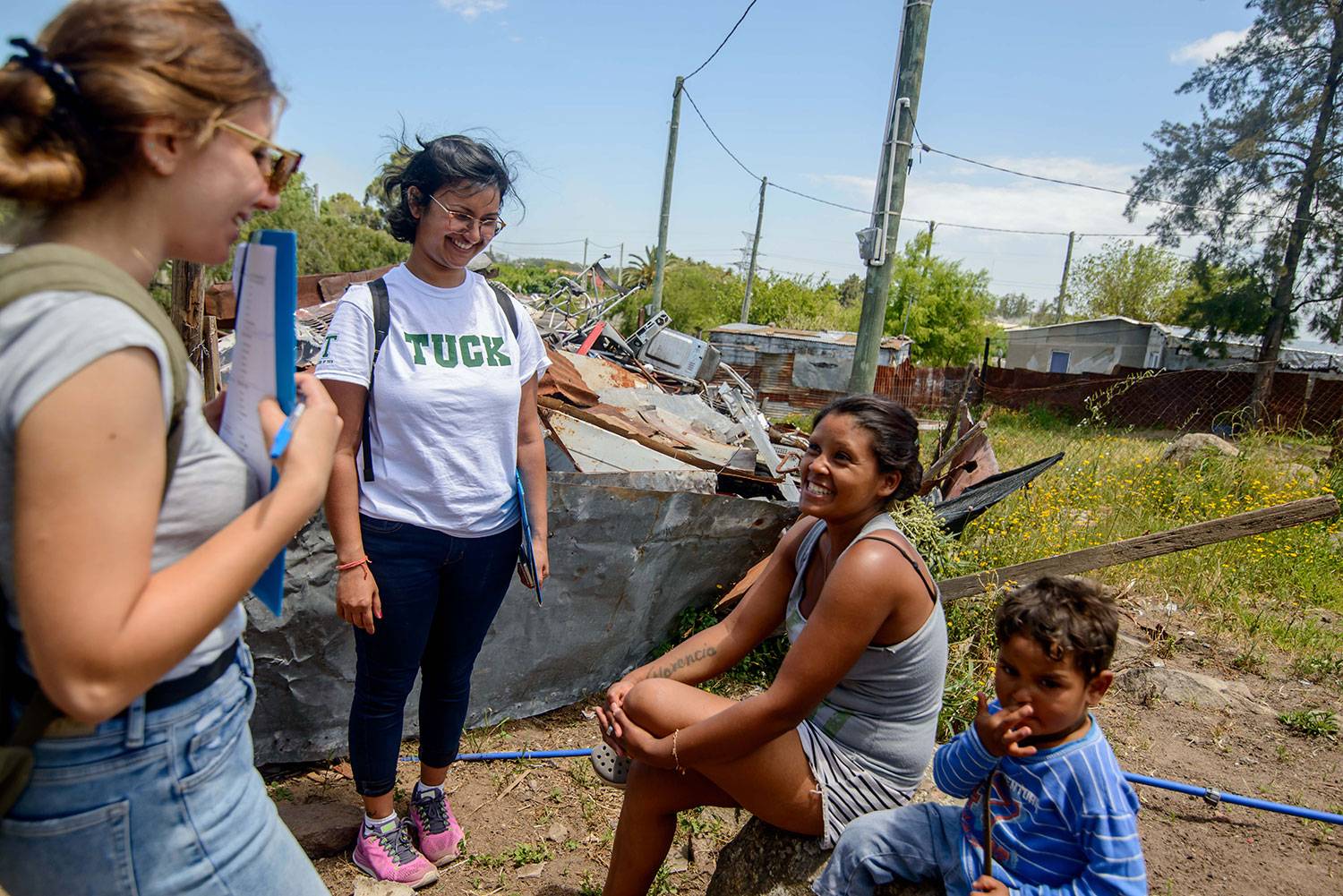From the Classroom to the Real World
Kerry Laufer, the director of OnSite Global Consulting, talks how experiential learning is done at Tuck.

An OnSite Global Consulting course for the US Embassy and the Catholic University of Uruguay took students abroad last December.
Over the last two decades, experiential learning has become a mainstay at business schools around the country.
At Tuck, through programs like OnSite Global Consulting, students take concepts and theories they’ve learned in the classroom and put them to work in real life. By going outside their comfort zone, often in another country, students learn how to become effective leaders and handle new situations.
Since kicking off in 1997 with projects in Vietnam and Indonesia, OnSite Global Consulting has taken more than 1,200 students to over 60 countries around the world. Commitments to programs like these, helped by The Tuck Difference: The Campaign for Tomorrow’s Wise Leaders, are driving innovation and giving students one-of-a-kind experiences that spur transformation and personal development.
Here in an interview, Kerry Laufer, the director of the OnSite Global Consulting course, talks about the ways in which experiential learning fits into Tuck’s curriculum and cultivates well-rounded students.
Why did MBA programs start adding experiential learning to the curriculum?
Courses like OnSite Global Consulting started popping up at top business schools more than 20 years ago, partially in response to calls from employers who wanted students coming out of MBA programs better able to collaborate, think critically, and solve problems. Since then, experiential learning courses have moved from the margins to the mainstream. Today, it is an expectation that top schools will have a portfolio of experiential learning courses that students can choose from. They are a great way for students to customize their learning.
How does the concept of experiential learning fit into Tuck’s curriculum?
At Tuck, our strength is our ability to create personal, connected, and transformative learning experiences for students. Experiential learning—particularly through our project-based courses—enables us to do this on a large scale. We currently offer nearly 500 slots on experiential learning courses across TuckGO annually, and all Tuck students will participate in one or more project-based course—all of them through the First-Year Project and some through the OnSite Global Consulting elective in the second year.
Why is experiential learning an effective way to learn?
Experiential learning is a bridge between classroom study and real-world business practice. It complements the case method, putting students directly in the role of the protagonist in a case. By working on a timely and relevant business challenge for an external client, they take initiative, make decisions and are accountable for the results. In the OnSite course, they have to solve problems in unfamiliar contexts and deliver a quality deliverable under substantial time pressure. In the process they learn to be more flexible, adaptable and resilient.
What is Tuck’s approach to designing these kinds of experiences?
We spend a lot of time on course design, because simply providing project experiences outside the classroom in no way guarantees that students will learn from them. For OnSite, this means paying close attention to what needs to happen before, during and after the field experience to optimize learning. Built-in opportunities for timely and relevant feedback and reflection are the most critical components, and these are threaded throughout the courses. Having one OnSite team advisor for each project team also allows for more focused attention on student learning.
How do you source consulting projects?
At Tuck, we are fortunate to have a strong and supportive alumni network, and we rely largely on them to help source projects. This fall, 10 out of our 12 OnSite projects have some kind of alumni involvement. Our job is to make sure they and all of our clients get the value they expect from an OnSite engagement because their investment is significant.
How is the Capital Campaign helping drive program innovation?
TuckGO has been a huge campaign priority, and we’re thrilled about being included. Donor funds help us offer a vibrant portfolio of offerings, allowing us to offer new courses in new countries, and enabling us to focus on the most important topics and trends impacting the global economy. For OnSite, we can expose students to a greater variety of clients, including more early-stage companies and non-profit sector clients. With about a quarter of students now taking multiple TuckGO courses and demand expected to rise, the support is more important than ever.
How does the field of experiential learning continue to evolve?
We are constantly taking what we learn and plugging it back into our courses to innovate and make them better. What works today may not work tomorrow, so we need to be nimble and responsive. Although no two institutions do it the same way, it helps to know and learn from what others in the field of experiential learning are doing. We all face similar challenges. My focus over the last three years has been on assurance of learning in experiential learning, working with partners from our network of peer schools to introduce a set of standards that courses like OnSite should adopt based on what we know about how students learn. This year, we are looking at the status of implementation of these standards across schools and the challenges that remain. It’s been so exciting to witness how much experiential learning has grown and developed over the years, and I’m especially proud of the central role Tuck has played in this.

